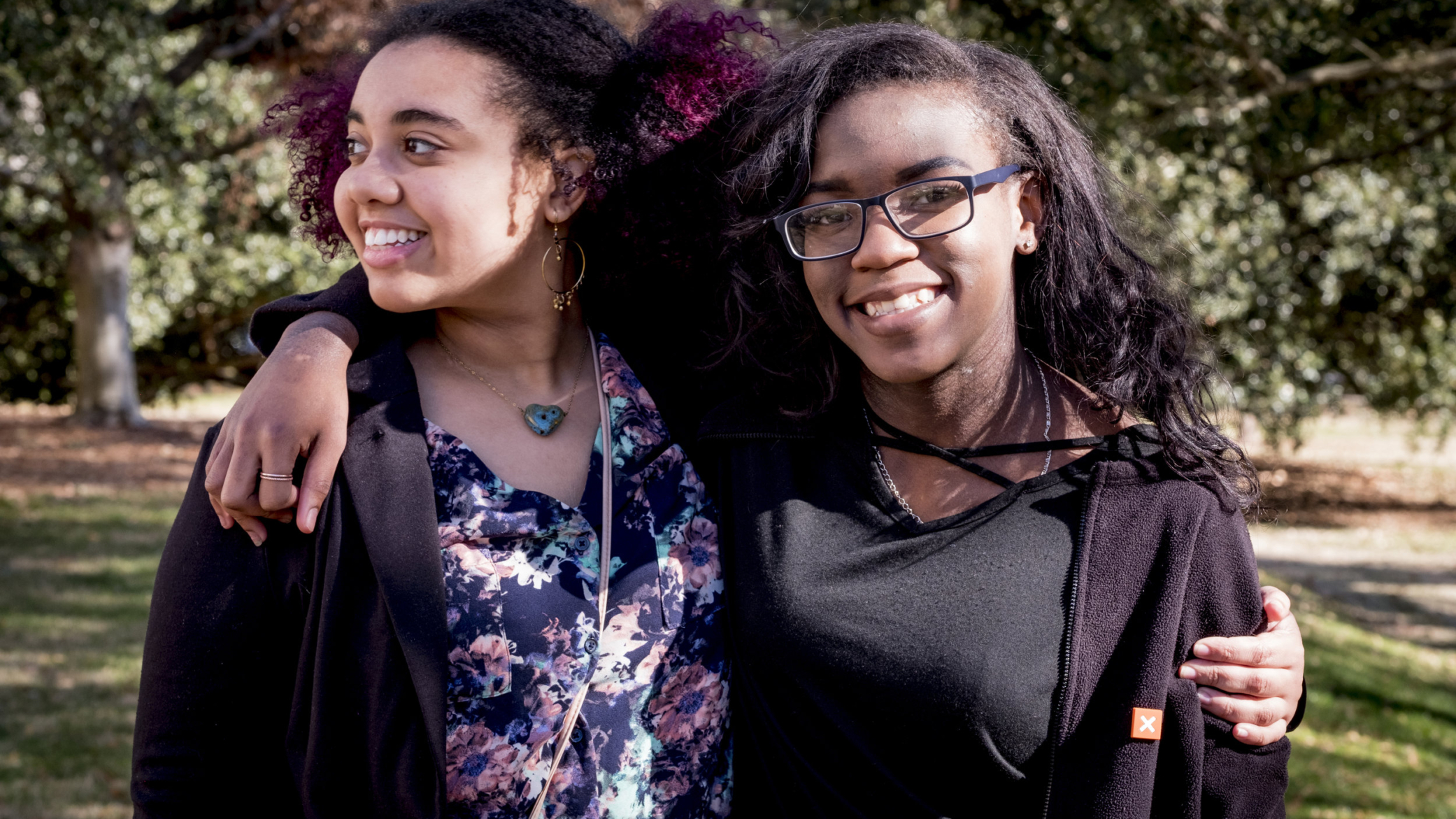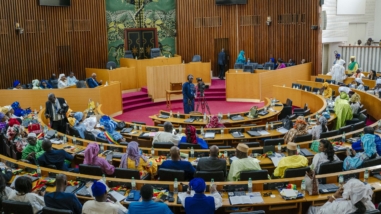Our new U.S. Reproductive Equity strategy

Reproductive freedom — the ability to determine whether, when, and under what circumstances to have children — enables people to achieve personal autonomy, economic empowerment, family well-being, and ultimately, to thrive. For over 50 years, the William and Flora Hewlett Foundation has supported efforts to expand access to safe, effective, and affordable contraception and abortion care — particularly for those facing the greatest barriers. Today, our Gender Equity and Governance Program remains as committed as ever to these efforts.
In the U.S., reproductive health, rights, and justice (RHRJ) is in a time of crisis. The 2022 Dobbs v. Jackson Women’s Health Organization decision and related state abortion restrictions has resulted in a confusing state-by-state policy landscape and has heightened barriers for many pregnant people and providers. For Black, Indigenous, and people of color; lower-income and rural communities; and LGBTQ+ and young people, recent events have escalated longstanding barriers to experiencing full reproductive freedom. Since Dobbs, the pace of threats to reproductive freedom has not slowed, with last month’s decision by the Alabama Supreme Court to ban IVF on spurious claims and the potential Supreme Court decision on the FDA’s mifepristone regulations being only two examples. And all of this is occurring in the context of significant challenges to democracy that make it harder for communities’ voices to be heard about the issues that affect our lives.
When I joined the Hewlett Foundation in 2023, I was excited about the opportunity to support the RHRJ movement at an organization with such strong values and integrity. But that didn’t make it a simple decision. I had been the executive director of an unapologetic abortion advocacy organization in Texas — my lifelong dream — and every day I valued the opportunity to serve my community, alongside dedicated, creative, and resilient colleagues. As rewarding as the work was, it was also challenging due to low, inconsistent, and often inflexible funding. I recognized how much more the RHRJ movement could accomplish if locally rooted organizations had the programmatic freedom, organizational infrastructure, and cross-geographic connections to innovate and expand their work. Fortunately, the Hewlett Foundation was looking to increase its support for grassroots-led advocacy, culture shift, and service delivery efforts in the U.S., and I jumped at the chance to draw on my experiences to lead this effort.
In this context, we at the Hewlett Foundation’s Gender Equity and Governance Program undertook a strategy refresh in 2023 to learn from our previous efforts and consider how we could contribute to turning the tide for reproductive health, rights, and justice and fostering enduring progress toward reproductive equity. Our process was grounded in current information, including the reflections of grantee partners, other field leaders, and foundation staff; external research and media reporting; and our team’s on-the-ground experience.
We are excited to share our new strategy. We do so with deep gratitude to those doing the crucial work day in and day out, to provide information and care, connect people with resources, and advocate for change. We also express our appreciation to the grantee partners, peer funders, field leaders, and Hewlett Foundation staff who informed our new strategy.
What we learned from our previous strategy
In recent years, the foundation’s strategy evolved from a longstanding focus on federal level advocacy led by national legal, advocacy, and policy-focused organizations to incorporate a wider range of efforts and a deeper focus on equity. From 2016 to 2023, we supported advocacy, research, narrative shift, and select programmatic efforts to advance an ambitious three-part goal: (1) prevent unintended pregnancies, (2) ensure access to safe abortion services, and (3) make family planning an integral part of women’s economic empowerment, social mobility, and family stability efforts.
Although we anticipated Roe’s fall and had already begun shifting our strategy, we recently sought to derive lessons from our previous efforts to make our work more effective going forward. Field leaders’ and peer funders’ perspectives and our internal reflections highlighted four main lessons.
First, expanding support for state and local advocates focused on abortion and contraception access and reproductive justice groups is key to turning the tide for abortion care, securing contraception, and achieving an expansive vision for reproductive equity. Second, the consequences of Dobbs and the related state restrictions have reinforced or exacerbated pre-existing inequities in access to abortion care. Responding to this urgent situation will require dedicated resources.
Third, the unintended pregnancy rate is the lowest in 30 years. To maintain this win, we must overcome the anti-abortion stigma that undergirds anti-contraception rhetoric and integrate work on women’s economic empowerment into holistic efforts led by grassroots organizations. Lastly, the RHRJ movement would benefit from stronger links with advocates around the globe. Events in the U.S. are occurring amidst a global trend toward liberalization, and we have opportunities to learn from our global counterparts and exchange ideas for the future.
Where we are going: Our updated strategy
Dobbs may have escalated the nation’s abortion care crisis, but it also created an opportunity for RHRJ proponents to activate a wider public, find new allies, and pursue innovative strategies. We intend to seize this opening to support the RHRJ movement to achieve and sustain reproductive equity over the long term. We also aim to meet immediate needs for abortion care and contraception among those facing the greatest barriers.
Our updated goal reaffirms our commitment to reproductive equity in service of providing everyone with a meaningful opportunity to thrive.
U.S. Reproductive Equity Strategy's goal
To ensure that people in the U.S. — particularly those facing the greatest barriers — have the freedom and resources to access the abortion care and contraception they need and want to achieve their life aspirations.
We have intentionally shifted to using the word “people” to be inclusive of cisgender women and girls, transgender, and nonbinary individuals. By “freedom,” we refer not just to rights formally enshrined in our laws but also to the broader culture that influences whether and under what circumstances people seek care. “Resources” comprise accessible, acceptable, and affordable reproductive health services. And to fulfill our commitment to equity, we will focus on making accessible, unbiased, and supportive reproductive health care available to those facing the greatest barriers, including Black, Indigenous, and people of color; low-income and rural communities; young people; people with disabilities; and LGBTQ+ individuals.
Our updated strategy deepens pivots in our approach that the foundation had begun in the last few years. Namely, we aim to leverage our resources to achieve the following outcomes:
- State and local organizations are resourced and are wielding greater power and influence to advance reproductive health, rights, and justice at the local, state, and national levels. We will direct more of our resources to strengthen support for state and local organizations focused primarily on abortion care and contraception as well as reproductive justice organizations and foster a strong ecosystem by funding the shared infrastructure successful movements require.
- Successful efforts to shift culture and narratives are gaining traction, and the broader movement has improved knowledge to grow public support and action for reproductive health, rights, and justice. We will back promising organizations to craft and test new narratives, access larger audiences, and produce knowledge to benefit the entire field. We will support a variety of efforts to promote empathy (by elevating people’s real-life experiences); encourage boldness (by building the evidence base for riskier, creative efforts); and strengthen connection (by engaging people in their own communities).
- More people have access to the abortion and contraception options of their choice, especially those facing geographic, economic, or cultural barriers compounded by racism and other biases. We aim to provide timely resources that enable the acceleration of service and policy efforts that hold promise for improving equity in abortion care and contraception. We will also support data collection and dissemination to the broader field for replication and scaling.
Our focus on supporting grassroots leadership spans all three outcomes. To maximize the impact of their work, we aim to equip organizations with a range of resources and learning opportunities founded in trust and aimed at fostering flexibility and connections. This includes enabling shared learning and exchange with actors across the globe, in collaboration with colleagues and partners of Hewlett’s Global Reproductive Equity portfolio.
We know that learning will be important in today’s rapidly shifting context. We will regularly gather grantee partners’ input, engage in reflection, and share what we learn with the field.
Over the coming months, we will share more about the strategy through virtual events and blog updates. We are thrilled and humbled to embark on this new strategy, and we are grateful to all who provided, and will continue to provide, input to guide our work.


